| Latest topics | » The Pictorial World - March 15th 1879 Yesterday at 1:13 pm by ben2000 » The lost diary of Pvt James Owen Thu Jul 25, 2024 12:03 pm by miklew » Last of the 24th at Isandhlwana Wed Jul 24, 2024 6:16 pm by John Young » What was the uniform of field marshals/generals in the zulu war? Mon Jul 22, 2024 6:53 am by John Young » Henderson and the NNH at Rorke's Drift  Sat Jul 20, 2024 12:17 pm by SRB1965 » Capt. D. Hayes 1/3rd Regt., NNC Thu Jul 18, 2024 11:11 am by Julian Whybra » The Wrecked Camp Wed Jul 17, 2024 4:33 pm by Julian Whybra » Private N/N John Robert Branch 90th Regiment and his discovered diary Mon Jul 15, 2024 8:53 pm by 1879graves » Private John Scott 24th Regiment a fugitive at large Sun Jul 14, 2024 12:06 pm by 1879graves » 90th foot sgt T. Collins 214 Sun Jul 14, 2024 10:57 am by johnman » Baron Von Steitencron Wed Jul 10, 2024 3:10 pm by Julian Whybra » Sgt Joseph Windridge, Defender of Rorke's Drift - Memorial Tue Jul 09, 2024 3:15 am by 90th » Writing advice Sun Jul 07, 2024 4:04 pm by Julian Whybra » South Africa 1877-79, 1 clasp, 1877-8-9 (4389 Fr. Sergt. S. Smith. O/2. Bde. R.A.) Sun Jul 07, 2024 9:30 am by rai » The trashing of the Zulu monument to the brave warriors at Isandlawana March 12, 2024 has been blamed on scrap metal scavengers. Thu Jul 04, 2024 7:41 pm by ADMIN» The Goodwill Zulu Festival: Celebrating the Welsh and KwaZulu Natal Shared Heritage. Thu Jul 04, 2024 7:27 pm by ADMIN» Any nominal role of G Coy 2/24th regiment  Thu Jul 04, 2024 11:18 am by Wayne » Bassage Diary Thu Jul 04, 2024 9:31 am by Julian Whybra » Prior to Sihayo's Kraal  Thu Jul 04, 2024 9:19 am by 90th » British Fort Locations Thu Jul 04, 2024 3:40 am by 90th » Sergeant 1064 Tom Hick / Hicks G Company 2/24th Regiment Wed Jul 03, 2024 11:05 am by Julian Whybra » A Hungarian soldier in the Zulu War (?) Fri Jun 28, 2024 2:31 pm by Mr M. Cooper » Private 25B/279 Henry Sears Bugler E Company 24th Reg. KIA Isandlwana Thu Jun 27, 2024 1:07 pm by gardner1879 » Hamilton Browne's birthday Fri Jun 21, 2024 9:22 am by Julian Whybra » Zulu "Corps" Thu Jun 20, 2024 6:01 pm by Hobbes » Army Pay Department Personnel Thu Jun 20, 2024 11:49 am by Julian Whybra » Ntshingwayo birth date Sun Jun 16, 2024 11:37 am by Hobbes » Zibhebhu and Cetshwayo's family Wed Jun 05, 2024 9:11 pm by Julian Whybra » Smith's Store/Hotel Wed Jun 05, 2024 6:06 pm by Julian Whybra » Corporal James Frowen Williams F Company.  Tue Jun 04, 2024 5:20 pm by Julian Whybra » Shaka iLembe Sat Jun 01, 2024 1:27 pm by Jon84 » Bugler 1415 Thomas Finn / Flin 90th Regiment  Sat May 25, 2024 11:28 am by johnman » Inspector-General Evelyn Richard Hugh Pollard Tue May 14, 2024 10:13 am by ADMIN» Alfred Fairlie Henderson photographs. Sat May 11, 2024 8:01 am by Julian Whybra » Fairlie's Native Police Thu May 02, 2024 9:12 pm by Hobbes |
| July 2024 | | Mon | Tue | Wed | Thu | Fri | Sat | Sun |
|---|
| 1 | 2 | 3 | 4 | 5 | 6 | 7 | | 8 | 9 | 10 | 11 | 12 | 13 | 14 | | 15 | 16 | 17 | 18 | 19 | 20 | 21 | | 22 | 23 | 24 | 25 | 26 | 27 | 28 | | 29 | 30 | 31 | | | | |  Calendar Calendar |
|
| Top posting users this month | |
| New topics | » The Pictorial World - March 15th 1879 Yesterday at 1:13 pm by ben2000 » The lost diary of Pvt James Owen Thu Jul 25, 2024 12:03 pm by miklew » Last of the 24th at Isandhlwana Wed Jul 24, 2024 5:53 pm by miklew » What was the uniform of field marshals/generals in the zulu war? Sun Jul 21, 2024 12:30 pm by darthvaix » Henderson and the NNH at Rorke's Drift  Fri Jul 19, 2024 1:29 pm by SRB1965 » Capt. D. Hayes 1/3rd Regt., NNC Wed Jul 17, 2024 10:52 pm by Julian Whybra » The Wrecked Camp Sun Jul 14, 2024 8:51 am by 61MECH » The trashing of the Zulu monument to the brave warriors at Isandlawana March 12, 2024 has been blamed on scrap metal scavengers. Thu Jul 04, 2024 7:41 pm by ADMIN» The Goodwill Zulu Festival: Celebrating the Welsh and KwaZulu Natal Shared Heritage. Thu Jul 04, 2024 7:27 pm by ADMIN |
| Zero tolerance to harassment and bullying. | |
Due to recent events on this forum, we have now imposed a zero tolerance to harassment and bullying. All reports will be treated seriously, and will lead to a permanent ban of both membership and IP address.
Any member blatantly corresponding in a deliberate and provoking manner will be removed from the forum as quickly as possible after the event.
If any members are being harassed behind the scenes PM facility by any member/s here at 1879zuluwar.com please do not hesitate to forward the offending text.
We are all here to communicate and enjoy the various discussions and information on the Anglo Zulu War of 1879. Opinions will vary, you will agree and disagree with one another, we will have debates, and so it goes.
There is no excuse for harassment or bullying of anyone by another person on this site.
The above applies to the main frame areas of the forum.
The ring which is the last section on the forum, is available to those members who wish to partake in slagging matches. That section cannot be viewed by guests and only viewed by members that wish to do so. |
| Fair Use Notice | | Fair use notice.
This website may contain copyrighted material the use of which has not been specifically authorised by the copyright owner.
We are making such material and images are available in our efforts to advance the understanding of the “Anglo Zulu War of 1879. For educational & recreational purposes.
We believe this constitutes a 'fair use' of any such copyrighted material, as provided for in UK copyright law. The information is purely for educational and research purposes only. No profit is made from any part of this website.
If you hold the copyright on any material on the site, or material refers to you, and you would like it to be removed, please let us know and we will work with you to reach a resolution. |
| | | The ammunition question |  |
|
+276pdr Julian Whybra Ray63 tasker224 Ulundi Mr M. Cooper impi thinredlineMOD Chard1879 Chelmsfordthescapegoat Drummer Boy 14 John barry garywilson1 90th Neil Aspinshaw Ken Gillings Mr Greaves RobOats Dave Frank Allewell 24th Saul David 1879 ADMIN old historian2 sas1 littlehand 31 posters | |
| Author | Message |
|---|
barry
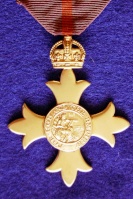
Posts : 947
Join date : 2011-10-21
Location : Algoa Bay
 |  Subject: The ammunition question Subject: The ammunition question  Thu Apr 26, 2012 7:52 am Thu Apr 26, 2012 7:52 am | |
| Hi John/ttrlmod/24th,
Make no mistake the whole outcome of Isandlwana was as a direct result of a management clanger and sheer incompetance, which correctly put the main architect in a bad light with a very irate British public.
As a result there was an attempt at a cover-up to protect Chelmsford's "reputation", which fooled some, but not all.
The authors Lock and Quantrill, in the "Zulu Victory" have a section on "the cover up" ,suggest you read it if you have not yet.
Back to the ammunition question;
Dr Machanix (SA Military History Soc) says that the day 22/01 started with 500,000 rounds in the kitty. Lock ,I think it was, said 400,000 rounds.
Col Clarke of the NP said 200,000 rounds were lost to the enemy.
Chelmsford's battalion reserves were 200,000 of that number and under strict instructions to the drummer boy who was controlling it, were not to be touched.
Thus, doing the maths using those numbers, a round 200,000-300,000 rounds were left to do battle with, and the big " If ", they could be delivered in time to where they were needed on a fluid, widely spread frontline located at extended distances from the ammo wagons.
The weapon used by most , the Martini- Henri was subject to overheating and to jamming according to Machanix, and others, and could not be used for fast sustained fire over extended periods. According to those who know the achieved rate of fire it was at the desultory rate of 30rounds in two hours!
So, even if there was no supply/delivery problems of ammunition on the battleground the rate of fire required to reduce the phlanxs of onrushing enemy, the defenders would have been very hard pushed to hold their ground. Thus, during the course of the battle there were ongoing fallbacks or retreats, ie losing of ground, fighting backwards with pistols and sometimes swords and sabres, because ammunition was short on the line, at that point in time, and the enemy were not been eliminated at a fast enought rate.
This allowed the wily Zulu's to quite quickly get the upperhand.
Some modern day "historians" have not given this problem the attention it deserves in history, whereas they should have as it was a major contibutor to the disaster.
regards
barry
i
Last edited by barry on Fri May 25, 2012 7:38 am; edited 3 times in total |
|   | | garywilson1

Posts : 374
Join date : 2009-01-22
Age : 62
Location : Timisoara , Romania
 |  Subject: Re: The ammunition question Subject: Re: The ammunition question  Thu Apr 26, 2012 7:58 am Thu Apr 26, 2012 7:58 am | |
| Barry , that seems a little contradictory ? If they were only able to fire 30 rnds in 2 hours how had they run out ?
Last edited by garywilson1 on Thu Apr 26, 2012 10:50 am; edited 1 time in total |
|   | | 24th
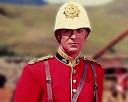
Posts : 1862
Join date : 2009-03-25
 |  Subject: Re: The ammunition question Subject: Re: The ammunition question  Thu Apr 26, 2012 8:03 am Thu Apr 26, 2012 8:03 am | |
| Butas stated before. - Quote :
- Essex,Higginson,Smith-Dorrien, Wilson,Bickely
none of those witness the delivery of the ammo to its destination. Admittedly they saw the going of it. |
|   | | Frank Allewell

Posts : 8572
Join date : 2009-09-21
Age : 77
Location : Cape Town South Africa
 |  Subject: Re: The ammunition question Subject: Re: The ammunition question  Thu Apr 26, 2012 8:08 am Thu Apr 26, 2012 8:08 am | |
| The whole statement is contradictory, based on a report by a less than reliable source which in itself is based on conjecture suposition and rumour.
From a simple statement about a bandsMAN to a bald statement that he was running the issuing of ammo, is to put it mildly, over the top. Takes no cognisance of proven fact and the rolls of Pullen Bloomfield etc.
Barry if you want to be taken seriously then you really are going to have to stop taking these giant leaps.
regards |
|   | | 24th

Posts : 1862
Join date : 2009-03-25
 |  Subject: Re: The ammunition question Subject: Re: The ammunition question  Thu Apr 26, 2012 8:29 am Thu Apr 26, 2012 8:29 am | |
| Personally I think Barry has raised some good points as like the thin redline.
We can't just dismissed what members post, because it's not in the history books on the shelves of other members. |
|   | | barry

Posts : 947
Join date : 2011-10-21
Location : Algoa Bay
 |  Subject: The ammunition problem Subject: The ammunition problem  Thu Apr 26, 2012 8:33 am Thu Apr 26, 2012 8:33 am | |
| Hi springbok9,
These are not giant leaps, these are the facts as laid down in real history and are there to see by those who research properly.
Those who choose to follow the popular romantic stories which generally gloss over the unpleasant and the embarrassing stuff, are absolutely free to do so.
regards
barry |
|   | | Frank Allewell

Posts : 8572
Join date : 2009-09-21
Age : 77
Location : Cape Town South Africa
 |  Subject: Re: The ammunition question Subject: Re: The ammunition question  Thu Apr 26, 2012 8:51 am Thu Apr 26, 2012 8:51 am | |
| Barry
Thats the problem, they arent facts, mainly innuendo. Show me one source that says a boy was controlling the regimental supplies of ammunition.
Then substantiate that source.
I have given an appraisal of the position of the regimental, 1/24th and 2/24th wagons, the retreat line for Durnfords forces was no where close to the regimental reserves.
You seem to regard Mechanix report as a holy grail, it isnt its without substance. Why accept that amateur rendering over proven fact?
regards
|
|   | | Neil Aspinshaw

Posts : 553
Join date : 2009-10-14
Location : Loughborough
 |  Subject: Re: The ammunition question Subject: Re: The ammunition question  Thu Apr 26, 2012 8:52 am Thu Apr 26, 2012 8:52 am | |
| All
Not sure your comment Barry's comment re sustained fire over a long period stacks up, if that was the case, only seven miles away on the same day/night it it certainly did not.
As everyone knows I don't (or try not to, do conjecture, except when I have some contemporary factual basis), Here is the result of Fletchers reports October to December 1875. I use this as a starting point, draw your own conclusions,
Col H.C Fletcher 2nd Bttn Scots Fusilier Guards 5.10.1875-8.12.1875
Rifle No 87 & 647 fired over four days without cleaning.
400 Rounds fired, Two handfuls’ of dry sand poured in action & three rounds fire with no problems.
2 rifles buried in Snow, sand and earth, again 10 rounds fired and worked perfectly.
50 rounds fired with great rapidity, had become extremely hot “some extraction difficulties”, but on cooling the rifles worked well.
Further tests revealed
20 Rifles tested, each with 140 rounds, with sand tests.
Rifle 7576 20 times extraction issues found
Rifle 8489 5 times extraction issues found
Rifle 8304 2 times extraction issues found
“No other casualties occurred”
Extraction difficulites?, indeed, Hook mentions this, and exactly how he cleared it, with the rod, it's a five second job. OK, enough to allow an adversary to close, but that is on the theory there is no support fire, So, unserviceable rifles based upon Fletchers test, in a company of 100 men, by his findings, at least 15 men would suffer some form of Jam in 140 shots each, but as mentioned earlier, a much higher rate of fire than any battle in the service life of the weopon
I freely concede this is a pure "clinical" trial, however it is factual, not conjecture, so it allows for balanced contemporary parallel.
I do offer in the counter case (as I don't want to be accused of being "Martini Bias!" LOL,) strangely enough firing carried out in March 1884 by the South Wales Borderers. General Sir Frederick Roberts had placed a report in front of the SoS complaining of the number of ammunition failures experienced by troops on manoeuvers in India, in particular the number of jammed rifles, the commander of the forces in Madras on the 24th of Feb 1884, complained the during exercises by the 2nd Battalion South Wales Borderers (the old 24th..maybe a few Zulu war veterans included) had been very critical of the “number of rifles of the infantry, several were out of action after comparatively few rounds due to exploded cartridges being jammed in the breech.”, this was investigated in the jamming reports at Kew, as a result of similar experiences in the Sudan. In particular it pointed to deterioration of the cartridge case lining due to long storage and high humidity. It doesn't actually state the manufacture date of the cartridge, but it was found in India, particularly with the Snider, that the gunpowder attacked the case lining, it was remedied by coating the case inside and out with shellac, and paper coating the cartridge. The jappanned steel cartridge base too, suffered greatly from rusting in the same climatic condition. In the Sudan, as I mentioned earlier it was primarily due to case deformation and the presence of Verde-Gras on the brass due to exposure to sweat, heat and rough handling in bandoliers.
|
|   | | impi

Posts : 2308
Join date : 2010-07-02
Age : 44
 |  Subject: Re: The ammunition question Subject: Re: The ammunition question  Thu Apr 26, 2012 9:28 am Thu Apr 26, 2012 9:28 am | |
| Thanks Neill. What concerns me, in the report its says after 50 rounds the rifle over-heated. That I can understand, but the men at Isandlwana did not have the facilities to cool their rifles. Not sure what you think but the men physical state of mind must have had some effect on the rifles performance perhaps the inability to load, inability to remove a jam. I can't quite believe that every man stayed cool calm and collected. |
|   | | Neil Aspinshaw

Posts : 553
Join date : 2009-10-14
Location : Loughborough
 |  Subject: Re: The ammunition question Subject: Re: The ammunition question  Thu Apr 26, 2012 9:41 am Thu Apr 26, 2012 9:41 am | |
| Impi
Fletchers report is "Great rapidity", which suggests firing away very quickly. A part from the dying moments not something companies would normally do, with better fire control. what fact DO we have from survivors? well, only Col Glynns groom (name I can't remember) claims to have shot away 50 rounds at Isandlwana very quickly, he lived, and..he didn't report a jam. Interesting?.
|
|   | | barry

Posts : 947
Join date : 2011-10-21
Location : Algoa Bay
 |  Subject: The ammunition question Subject: The ammunition question  Thu Apr 26, 2012 10:45 am Thu Apr 26, 2012 10:45 am | |
| Hi GW1, in reply ; CTSG said this in an earlier post "it stayed in the boxes  ". It is a bit simplistic but succinct, nonethless has credence." Now, this happened for a variety of reasons over the course of the battle, and not neccesarily in this sequence ; * in the early stages the QM's were issuing a small number of boxes to each runner, not nearly enough for 100 or so riflemen who were low on ammo and were being severely pressed. * the initial rush to the supply wagons to draw ammo for units under pressure were delayed because boxes had to be smashed open, this taking extra time and thus delaying the returning runners. * pack mules used for ammo delivery by the NMP, and some other Colonial units were skittish and bolted, not making their deliveries to the hard pressed line. * some units were "husbanding" their ammo supplies and not sharing with those who had none. * once the first link in the defence chain collapsed, the Zulu's were quickly behind the lines and cut off a major source of ammunition. * black units were refused supply , period, because they tended to be heavy on their requirements (NNC) * the main battalion reserve of 200,000 rds was , according to most accounts, not touched. It was kept for the Zulu's to capture in it's entirety. * some front line units were taking much needed riflemen off the line and sendiing them quite a distance back to get ammo, only to be refused. etc, etc, etc. Preceding posts by other members all touch on these and are referenced. regards barry
Last edited by barry on Fri Apr 27, 2012 6:41 am; edited 2 times in total |
|   | | garywilson1

Posts : 374
Join date : 2009-01-22
Age : 62
Location : Timisoara , Romania
 |  Subject: Re: The ammunition question Subject: Re: The ammunition question  Thu Apr 26, 2012 10:51 am Thu Apr 26, 2012 10:51 am | |
| Hi Barry ,
What i found confusing about your earlier post was the claim that the ammunition supply was low ; and at the same time the rate of fire was so low ?
Gary. |
|   | | thinredlineMOD

Posts : 57
Join date : 2012-04-12
 |  Subject: Re: The ammunition question Subject: Re: The ammunition question  Thu Apr 26, 2012 11:24 am Thu Apr 26, 2012 11:24 am | |
| Barry, I would agree with you that the battle wasn't lost due to running out of ammunition but I think it's hard to believe that over the whole course of time a maximum of 2-300,000 rounds were spent at an (average) firing rate of 15 r/h; that is 1 shot every 4 minutes. That really begs the question how they could hold their position at all. [quote="Drummer Boy 14"] - 24th wrote:
-
- Quote :
- but the 24th were,
24th
There is no evidence to suggest they were running out. They didn't run out in the strict meaning but the quartermasters would've known how long the available ammo would potentially last and adjust the speed they gave the ammunition away accordingly. Therefore, the men on the frontline got less than they could probably have fired away. |
|   | | barry

Posts : 947
Join date : 2011-10-21
Location : Algoa Bay
 |  Subject: The ammunition question Subject: The ammunition question  Thu Apr 26, 2012 1:19 pm Thu Apr 26, 2012 1:19 pm | |
|
Hi trlmod,
A nice summary, about sums it up. Quite a difficult concept to grasp too
regards
barry.
|
|   | | Drummer Boy 14
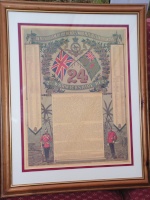
Posts : 2008
Join date : 2011-08-01
Age : 27
 |  Subject: Re: The ammunition question Subject: Re: The ammunition question  Thu Apr 26, 2012 5:16 pm Thu Apr 26, 2012 5:16 pm | |
| Barry
The moment the retreat began disaster couldn't be avoided, no ammount of ammo would have
saved the day. The left horn was compleltly free to charge and the Right horn had little oposition
apart from Shepstone's NNC (?).
The 24th fourght there way back to camp but it was to late to re-form.
Its the retreat that was the cause that made everything come undone. So why was rthere a retretat ?
The reason is simple, the 24th were holding there own, but Durnfords posistion became outflanked and he
had to order a withdrawl, the colonials held a reargaurd action while the rest of the horseman retreated.
With the Right flank now totaly open Pulleine has no option but to order a reteat, game over.
Cheers |
|   | | impi

Posts : 2308
Join date : 2010-07-02
Age : 44
 |  Subject: Re: The ammunition question Subject: Re: The ammunition question  Thu Apr 26, 2012 10:33 pm Thu Apr 26, 2012 10:33 pm | |
| " Durnford's men began run low on ammunition and withdrew to the camp leaving the British flank vulnerable. This coupled with orders from Pulleine to fall back towards the camp led to a collapse of the British line. Attacking from the flanks the Zulus were able to get between the British and the campsite. Overrun, British resistance was reduced to a series of desperate last stands as the 1st Battalion and Durnford's command were effectively wiped out"
Right or wrong.
|
|   | | Mr M. Cooper
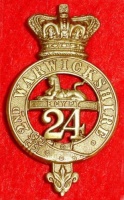
Posts : 2591
Join date : 2011-09-29
Location : Lancashire, England.
 |  Subject: The ammunition question Subject: The ammunition question  Fri Apr 27, 2012 12:36 am Fri Apr 27, 2012 12:36 am | |
| Durnford and his men were at first doing well in the donga, holding back the zulus until the ammo started to run low. Men were sent back to the camp for more ammo, but could not find where their wagons were, and with the lull in the firing, the zulus started to outflank Durnford and his position was becoming very vulnerable. At this point Pulleine ordered Pope to move to the right, however, Col Durnford was NOT aware of this order, and just as Pope was moving his men, Durnford could see that his position was under threat, and with the ammo running low, he abandoned the donga and made a retreat towards the camp. Also don't forget that the companies of the 24th (2nd Warwickshire) regiment, were spread too far apart with only the NNC between them, and when the order was given to cease fire and withdraw, the NNC withdrew too quickly leaving gaps between the companies, and the zulus took advantage of this and got between the companies preventing them getting together. So it was through these gaps or 'doors' between the companies being left open by the rapid retreat of the NNC, that the zulus were able to get between the companies and also get into the camp, and we all know the result of that.
|
|   | | Drummer Boy 14

Posts : 2008
Join date : 2011-08-01
Age : 27
 |  Subject: Re: The ammunition question Subject: Re: The ammunition question  Fri Apr 27, 2012 7:38 am Fri Apr 27, 2012 7:38 am | |
| Ammo was low but it was not the reason for the withdrawl. If it was how did the Bastos help at RD ? Or the Endale men help at the River ? Or the NC and NMP hold a fighting withdrawl and then fight with durnford ? Mr Cooper If the Zulus got between and behind the Companies how did nearly all of them get back  The main bodies of C,E,F,H,A some of Dyers Coy and some of Pope's all made it back and even further. Cheers |
|   | | Frank Allewell

Posts : 8572
Join date : 2009-09-21
Age : 77
Location : Cape Town South Africa
 |  Subject: Re: The ammunition question Subject: Re: The ammunition question  Fri Apr 27, 2012 7:49 am Fri Apr 27, 2012 7:49 am | |
| Ive been trying to locate the story of the 'little boy controling the ammunition wagon'. Can anyone point me to a FIRST HAND SOURCE that this staement was made>
So far I can only locate a hearsay version from the Rev Owen Watkins?
Regards |
|   | | John
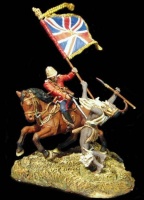
Posts : 2558
Join date : 2009-04-06
Age : 61
Location : UK
 |  Subject: Re: The ammunition question Subject: Re: The ammunition question  Fri Apr 27, 2012 6:52 pm Fri Apr 27, 2012 6:52 pm | |
| - Quote :
- Ammo was low but it was not the reason for the withdrawl. If it was how did the Bastos help at RD ?
Or the Endale men help at the River ?
Or the NC and NMP hold a fighting withdrawl and then fight with durnford ? Would these regiments have been issued with the MH. Requiring MH ammuntion. |
|   | | thinredlineMOD

Posts : 57
Join date : 2012-04-12
 |  Subject: Re: The ammunition question Subject: Re: The ammunition question  Fri Apr 27, 2012 7:30 pm Fri Apr 27, 2012 7:30 pm | |
| - John wrote:
-
- Quote :
- Ammo was low but it was not the reason for the withdrawl. If it was how did the Bastos help at RD ?
Or the Endale men help at the River ?
Or the NC and NMP hold a fighting withdrawl and then fight with durnford ?
Would these regiments have been issued with the MH. Requiring MH ammuntion. According to Ian Knight, Durnford's mounted contingent was equipped with Swinburn-Henry (Zikhali Horse) and Martini Henry (Edendale) carbines. The rifle type of Hlubi's horse seems to be unknown. The Natal volunteers and NMP used Swinburn-Henry carbines. Knight writes that Swinburn-Henry and Martini Henry carbines use the same ammunition as the Martini Henry rifles. |
|   | | John

Posts : 2558
Join date : 2009-04-06
Age : 61
Location : UK
 |  Subject: Re: The ammunition question Subject: Re: The ammunition question  Fri Apr 27, 2012 7:55 pm Fri Apr 27, 2012 7:55 pm | |
| - Quote :
- Swinburn-Henry and Martini Henry carbines use the same ammunition as the Martini Henry rifles.
Not sure if that's correct. Could be wrong? |
|   | | thinredlineMOD

Posts : 57
Join date : 2012-04-12
 |  Subject: Re: The ammunition question Subject: Re: The ammunition question  Fri Apr 27, 2012 8:27 pm Fri Apr 27, 2012 8:27 pm | |
| - John wrote:
-
- Quote :
- Swinburn-Henry and Martini Henry carbines use the same ammunition as the Martini Henry rifles.
Not sure if that's correct. Could be wrong? I was surprised, too, because I heard otherwise but that's what he writes. Maybe some cartridges types can be used in both while others cannot. |
|   | | littlehand
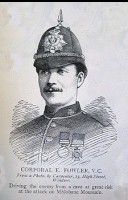
Posts : 7076
Join date : 2009-04-24
Age : 55
Location : Down South.
 |  Subject: Re: The ammunition question Subject: Re: The ammunition question  Fri Apr 27, 2012 11:40 pm Fri Apr 27, 2012 11:40 pm | |
| The Swinburn Henry carbine used the same 577/450 service cartridge as the Martini Henry and was in use until 1895 when it was replaced with Martini Metford. |
|   | | Neil Aspinshaw

Posts : 553
Join date : 2009-10-14
Location : Loughborough
 |  Subject: Re: The ammunition question Subject: Re: The ammunition question  Sat Apr 28, 2012 7:49 am Sat Apr 28, 2012 7:49 am | |
| A little factual evidence for you to ponder
Ian does have the facts slightly out, The MH carbine was not available in South Africa in Jan 1879. Production had only been 18,000 by August 1878, with priority of distribution going the Imperial cavalry. First recorded issue is to the 9th Lancers in Afghanistan (the priority trouble spot) in December 1878, The first chance would be with the arrival of the lancers in March of 1879. That is why the Swinburn (bought locally) was such a popular alternative. It accepted he same cartridge but was very poor in extraction.
A big clue is in Molife's report, that Durnford was in the donga, encouraging his men, and clearing the mens rifles with a flick of his good hand. This is certainly not a Lever action rifle, be it a Swinburn or a Martini, as you cannot get into a position where this is even remotely better than the user doing it himself. I may have written this before, but the Snider is prone to poor extraction, and the way to clear it is open the breech block and bash it with the heel of the palm. The Snider rod was in two parts, inside the butt trap, bashing the block is quicker.
If anyone is coming to Brecon for the Zulu war weekend, I will have deliberately rigged up a jammed Martini and a Snider to illustrate the jam extraction for my lecture "Breechloader..as sure fire guarantee of success". |
|   | | barry

Posts : 947
Join date : 2011-10-21
Location : Algoa Bay
 |  Subject: The Sniders's extraction problems Subject: The Sniders's extraction problems  Sat Apr 28, 2012 8:37 am Sat Apr 28, 2012 8:37 am | |
|
Hi Neil,
Thanks again for the technical inputs. Now two questions.
Given the slower cyclical rate devolving from extraction difficulties described , and using a best guestimate, how may rounds per hour, sustained , to do think the Snider could achieve.?
Was the Snider subject to any overheating problems?
All,
Did Durnford really have to personally clear the chambers of all his riflemen, or just some of them.?
regards
barry
|
|   | | Neil Aspinshaw

Posts : 553
Join date : 2009-10-14
Location : Loughborough
 |  Subject: Re: The ammunition question Subject: Re: The ammunition question  Sat Apr 28, 2012 8:56 am Sat Apr 28, 2012 8:56 am | |
| The Sinder has a lower rate of fire as the load/unload characteristics are slower than the Martini. The barrel heat is not insignificant, however the Snider bullet is expansive (like an umbrella in the wind) and as such with form to the rifling with less external resistance. A clay plug in the bullet base is forced forward to ensure the opening up is constant.
The MH bullet is .451" nominal, paper patched to .459", on firing it uses the "overtaking" principal, in that the bullet base tries to overtake the nose as the force of the explosion forces it down the bore. The result is the bullet expands outward to .464" (chamber) and then is compressed in the last two thirds of the barrel so pressure is increased behind the bullet resistance. The friction effect is far higher, but velocity is increased.
The paper (100% cotton fibre)is designs to prevent leading, but stopping barrel to lead contact. imagine a wax crayon on paper, it leaves a mark. |
|   | | thinredlineMOD

Posts : 57
Join date : 2012-04-12
 |  Subject: Re: The ammunition question Subject: Re: The ammunition question  Sat Apr 28, 2012 2:15 pm Sat Apr 28, 2012 2:15 pm | |
| Hi Neil, thanks for the input from me as well. (I actually hoped you would step in) - Neil Aspinshaw wrote:
- A big clue is in Molife's report, that Durnford was in the donga, encouraging his men, and clearing the mens rifles with a flick of his good hand. This is certainly not a Lever action rifle, be it a Swinburn or a Martini, as you cannot get into a position where this is even remotely better than the user doing it himself.
Interesting. So what rifles do you think the Edendale and/or Hlubi troopers would (could) have been issued instead? On a sidenote, didn't they develope a less powerful cardridge for the carbines? Firing the regular MH round from a carbine must've been given a savage kick. |
|   | | Neil Aspinshaw

Posts : 553
Join date : 2009-10-14
Location : Loughborough
 |  Subject: Re: The ammunition question Subject: Re: The ammunition question  Sat Apr 28, 2012 6:56 pm Sat Apr 28, 2012 6:56 pm | |
| TRLMOD
Oddly the egg before the Chicken, Mk3 carbine ammunition (70grn powder 410 grain bullet) had been approved 15th Sept 1877, however, the carbine ammunition decision had been as problematic as the selection of the carbine pattern. There had been six types of carbine tried from 1871, initially with a 70 grains of powder over 380 grn bullet but it proved poor. The final decision was for the 70g/410 combination in 1875, the paper had to be pre-cut as the shorter rifle barrel did not cut the paper patch before it left the muzzle.
The first round had a wool filler, however the cartridge case was later lined with thick paper to make up for the space created by the lower powder volume. I doubt, (but no primary source) that The Carbine ammunition had made its ay to SA, by 1879, so regular Mk3 rifle ammuntion was most likely.
Over 18,000 Swinburns were viewed at Birmingham, the majority being sent to South Africa in the period 1874-1877. Cost was prohibitive as they were not Governmental issue, but purchased through trade suppliers, mine is W & R Blakemore, however Kings' of Durban provided them too.
As I have written in previous posts, the Snifder Mk3 carbine proved to be a very popular weapon, with production at Enfield going well into 1873, and BSA carrying out contracts into 1882. It is often viewed as a second class arm, it wasn't, and even in England, the Snider was the standard issue rifle of Volunteer and Militia regiments until 1885. Natal contingents were in effect militias of one type or another, and the money needed to arm those men were a local issue and had to be paid for out of the local purse, not from London. |
|   | | thinredlineMOD

Posts : 57
Join date : 2012-04-12
 |  Subject: Re: The ammunition question Subject: Re: The ammunition question  Sat Apr 28, 2012 7:39 pm Sat Apr 28, 2012 7:39 pm | |
| Thanks for the explanation! - Neil Aspinshaw wrote:
- As I have written in previous posts, the Snifder Mk3 carbine proved to be a very popular weapon, [...]
Oh, of course. Must have confused Snider and Swinburne in your earlier posts ... cheers, Dave |
|   | | old historian2
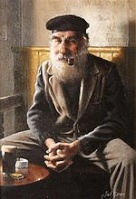
Posts : 1093
Join date : 2009-01-14
Location : East London
 |  Subject: Re: The ammunition question Subject: Re: The ammunition question  Sat Apr 28, 2012 8:07 pm Sat Apr 28, 2012 8:07 pm | |
| With reference to the cartridges themselves. What is the thickness of the brass casing. Most of the photo's I have seened show them to be badly dented. Is this natural with the MH ammuntion and would it have impaired the insertion of the round into the breach. |
|   | | thinredlineMOD

Posts : 57
Join date : 2012-04-12
 |  Subject: Re: The ammunition question Subject: Re: The ammunition question  Sun Apr 29, 2012 1:18 am Sun Apr 29, 2012 1:18 am | |
| - old historian2 wrote:
- Most of the photo's I have seened show them to be badly dented. Is this natural with the MH ammuntion [...].
The older cartridges on the Martini Henry website sure look badly deformed so it seems to have been quite normal. [You must be registered and logged in to see this link.]
Last edited by thinredlineMOD on Sun Apr 29, 2012 1:38 pm; edited 1 time in total |
|   | | Neil Aspinshaw

Posts : 553
Join date : 2009-10-14
Location : Loughborough
 |  Subject: Re: The ammunition question Subject: Re: The ammunition question  Sun Apr 29, 2012 8:56 am Sun Apr 29, 2012 8:56 am | |
| OH2 The Mk3 ammo was designed to be loose fitting in the camber to compensate for malformation. However, it was carriage in bandoliers that did seriously mis-shape the ammuntion. Buller wrote complaining about it in 1880. [You must be registered and logged in to see this image.]Here is three comparisons, all taken from the paper packets of ten I have. Left is Mkiii service round, next an Eley Contract E round from the packet circa 1888 and then a solid drawn Mk3 round 1886. (all live by the way, they have to be on firearm certificate..not if inert though) The case was .0004" Thickness, wrapped around two times with half an overlap. it was first rolled around a mandrel as a tube. Then the shoulders were formed by four quadrant shape presses which formed the bottle-neck and four promounced "ribs" on the bottle neck. The die then rotated folding the ribs against the neck and shoulder to provide rigidity.(these are the lateral lines running down the neck) The one or two cannelures corresponded with matching cannelures in he bullet to hold it into place. Internally was two strengthening base cups, then two external. You can see these at the base. If you look carefully you will see a small ovoid hole (it has a block dot in it) on the left hand cartridge, this is an inspection hole for the foreman to check the strengthening cups are in place. The base is japanned steel. |
|   | | Chard1879
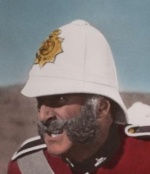
Posts : 1261
Join date : 2010-04-12
 |  Subject: Re: The ammunition question Subject: Re: The ammunition question  Tue May 01, 2012 10:09 pm Tue May 01, 2012 10:09 pm | |
| Thinking about It logically!!
There must have been an ammunition problem, for the pure fact it was in the ammuntion boxes in the center of the camp and not on the firing line.
Any officer with a ounce of brains, would know that if the men were put advance of the camp, ammuntion would be needed, and more of than the allocation 70 rounds as depicted in the standing orders.
Because a few rounds were getting though doesn't take away the fact that an ammuntion problem exsisted.
Ammuntion could have been placed in large quantities and various locations and distances at the back of the fring lines. If a retreat had been necessary, they could have fell back to the ammuntion points. This would have allowed most of the Compaines to join up in the main area where there would have been enough ammuntion to beat or force the Zulus to retreat. |
|   | | barry

Posts : 947
Join date : 2011-10-21
Location : Algoa Bay
 |  Subject: The ammunition questioni Subject: The ammunition questioni  Wed May 02, 2012 7:00 am Wed May 02, 2012 7:00 am | |
| Hi chard79, Correct  And to further exacerbate the situation, many defenders did not turn out from their lunch to the lines, when the surprise attack came, with 70 rounds in their pouches, but only 40. There is a preceding post on this thread from a member which details those circumstances. So,..... those riflemen would have been in trouble ammuntion wise after about 60mins of "furious" independant firing. Now considering the return of an ammunition runner from the front line to the ammo wagons was 20 minutes at the beginning, these men would have had to fall back after about 60-70 mins because they could not hold the line any longer. Then, some ammo "trickled" in ( 300-400 rds for +-100 riflemen?) , and this process repeated itself, but at shorter intervals each successive fallback or retreat. A fact little known is that many of those men who "saw the light" and who fled and crossed the mZinyathi dumped their rifles in the river, as they had no amunition for them. Two wagon loads of weapons were later recovered. regards barry |
|   | | Drummer Boy 14

Posts : 2008
Join date : 2011-08-01
Age : 27
 |  Subject: Re: The ammunition question Subject: Re: The ammunition question  Wed May 02, 2012 7:11 am Wed May 02, 2012 7:11 am | |
| Barry 40 rounds ? They had specific orders to keep on all there kit, So please whats the primary source for them only hvaing 40 ?There isn't one. Chard1879 No is no evidence to suggest there was an ammuntion problem at Isandlwana and plenty of evidence to suggest otherwise. How would it have allowed the Coys to join up ?  G Coy was mostly wiped out in minitues, H Coy was driven into the 1/24th camp, A Coy was courght in front of the 2/24th tents and wiped out in the camp, F Coy fourght there way down the fugitives trail, ect. no way of joinig up. Barry, the rifles found in the mZinyathi could be from anyone, a lot of fugitives lost there weapons getting across. Cheers |
|   | | Frank Allewell

Posts : 8572
Join date : 2009-09-21
Age : 77
Location : Cape Town South Africa
 |  Subject: Re: The ammunition question Subject: Re: The ammunition question  Wed May 02, 2012 7:51 am Wed May 02, 2012 7:51 am | |
| The number of troops that got to the stream was limited, the cairns either side show that.
No foot soldiers suvived father than the stream. therefore the number of rifles should be in direct proportion.
A large number of the NNC suvived, but did they have that quantity of guns? And would they have held onto them for a 3 mile fraantic dash?
Rifles were undoubtably dumped but more down the trail than elsewhere.
Two truckloads? Love to see that source.Suprise attack? Troops were in line long before the impi crossed the ridge. Lots of testimony to that, Essex, Cochrane, SD, Brickhill, Williams, Gardner et al.
Penn Symons interviewed suvivors at RD and Helpmakaa in the following few days and drew a sketch from those discusions ( see CT Atkinson ) Essex drew a sketch, Gardner drew a sketch, Molife drew a sketch. All indicating the troop positions before the attack
Not coming back from lunch? Source would be good.
Only 40 rounds per man Source would be interesting
A lot of these comments have been made in the past, sources have been requested but never produced merely a comment of 'those that know'.
I look forward to being PROVED wrong.
Regards
|
|   | | Chard1879

Posts : 1261
Join date : 2010-04-12
 |  Subject: Re: The ammunition question Subject: Re: The ammunition question  Wed May 02, 2012 4:51 pm Wed May 02, 2012 4:51 pm | |
| - Quote :
- Rifles were undoubtably dumped but more down the trail than elsewhere.
- the ammuntion. |
|   | | Drummer Boy 14

Posts : 2008
Join date : 2011-08-01
Age : 27
 |  Subject: Re: The ammunition question Subject: Re: The ammunition question  Wed May 02, 2012 5:07 pm Wed May 02, 2012 5:07 pm | |
| Chard1879
Your source please ? I dout there is one.
The 24th who reached the mZinyathi had been retreating for over 3 miles, course they were low on ammo.
Most fugitives dumped there weapons to lighten there loads, read Brickhill or Higginsom
Cheers |
|   | | Chard1879

Posts : 1261
Join date : 2010-04-12
 |  Subject: Re: The ammunition question Subject: Re: The ammunition question  Wed May 02, 2012 5:49 pm Wed May 02, 2012 5:49 pm | |
| I'm not saying they didn't dump their weapons, what I'm saying is there wouldn't have been any ammuntion.
And stop harping on about primary sources, ever since Julian has mentioned it, you use it in every other word, we will never know what happened at Isandlwana, most of what has been written is based on speculation. If we stick to primary sources then the discussion would be very short lived. |
|   | | Drummer Boy 14

Posts : 2008
Join date : 2011-08-01
Age : 27
 |  Subject: Re: The ammunition question Subject: Re: The ammunition question  Wed May 02, 2012 8:02 pm Wed May 02, 2012 8:02 pm | |
| In fact Jackson uses only primary sources in his account and its the most accurate account of
Isandlwana avaiable, i can find less then 2 mistakes in the whole book (One being a typo.)
Brickhill says how just after passing the saddle the place was covered in Guns, ammo belts, helmets, blankets
revolvers, spears, saddles, shields ect.
Cheers
Last edited by Drummer Boy 14 on Wed May 02, 2012 8:18 pm; edited 1 time in total |
|   | | littlehand

Posts : 7076
Join date : 2009-04-24
Age : 55
Location : Down South.
 |  Subject: Re: The ammunition question Subject: Re: The ammunition question  Wed May 02, 2012 8:16 pm Wed May 02, 2012 8:16 pm | |
| |
|   | | littlehand

Posts : 7076
Join date : 2009-04-24
Age : 55
Location : Down South.
 |  Subject: Re: The ammunition question Subject: Re: The ammunition question  Wed May 02, 2012 8:27 pm Wed May 02, 2012 8:27 pm | |
| DB. Do you reckon this could have happen at some point. [You must be registered and logged in to see this link.] |
|   | | Chelmsfordthescapegoat

Posts : 2593
Join date : 2009-04-24
 |  Subject: Re: The ammunition question Subject: Re: The ammunition question  Wed May 02, 2012 8:55 pm Wed May 02, 2012 8:55 pm | |
| Littlehand. The ending probably came about a few times on that day.
But we could say Dunford had a problem with ammunition, which effectively was a problem for the whole camp. |
|   | | Drummer Boy 14

Posts : 2008
Join date : 2011-08-01
Age : 27
 |  Subject: Re: The ammunition question Subject: Re: The ammunition question  Wed May 02, 2012 8:59 pm Wed May 02, 2012 8:59 pm | |
| Yes it was a problem but it wasn't the reason for the withdrawl.
He explained so himself to gardner or essex
He considered the posistion to extended and wanted to gather all the troops together |
|   | | Dave

Posts : 1603
Join date : 2009-09-21
 |  Subject: Re: The ammunition question Subject: Re: The ammunition question  Wed May 02, 2012 9:12 pm Wed May 02, 2012 9:12 pm | |
| Is it known or estimated how many fled from Isandlwana and were killed on the trail to the drift. |
|   | | Dave

Posts : 1603
Join date : 2009-09-21
 |  Subject: Re: The ammunition question Subject: Re: The ammunition question  Wed May 02, 2012 9:16 pm Wed May 02, 2012 9:16 pm | |
| - Quote :
- Yes it was a problem but it wasn't the reason for the withdrawl.
I wouldn't take that as true, no ones going to stay when the ammuntion was all but gone. I don't think they even had bayonets. So what would they have fought with, their hands. And if it wasn't a problem why dd Durnford send out men to get supplies. |
|   | | Drummer Boy 14

Posts : 2008
Join date : 2011-08-01
Age : 27
 |  Subject: Re: The ammunition question Subject: Re: The ammunition question  Wed May 02, 2012 9:45 pm Wed May 02, 2012 9:45 pm | |
| His men were short of ammo, but they hadn't run out, and this wasn't the reason he withdrew.
Davies had just brought ammo, when they withdrew and Henderson had found No.2 ammo waggons, which he
took his troop to.
Cheers |
|   | | littlehand

Posts : 7076
Join date : 2009-04-24
Age : 55
Location : Down South.
 |  Subject: Re: The ammunition question Subject: Re: The ammunition question  Wed May 02, 2012 9:52 pm Wed May 02, 2012 9:52 pm | |
| We all like primary sources.  Right see if I can make some headway with this... " Extract Statement by Captain Alan Gardner, 14th Hussars. Camp, Rorke's Drift, January 26, 1879.
I returned to Lieutenant-Colonel Pulleine who had previously told me to remain with him. Shortly afterwards, observing the mounted men retiring, I rode back to ascertain the cause. Captain Bradstreet told me he had been ordered to do so by Colonel Durnford, who soon afterwards told me himself that he considered our position too extended, and wished to collect all the troops together. But it was now too late. Large masses of the enemy were already in the camp and completely surrounded the men of the 24th Regiment."Before Durnford had order the men to retire, it was already to late, he left it to late. Large masses were already in the camp. With the obvious lack of ammuntion he could not keep the Zulus back giving them time to retire. Essex. " The enemy was descending the hill, having rushed forward as soon as our men disappeared below the crest, and beyond (?) the right of the line with which I was present had even arrived near the foot of the hill. The enemy's fire had hitherto been very wild and ineffective, now, however, a. few casualties began to occur in our line. The companies 1st Battalion 24th Regiment first engaged were now becoming short of ammunition, and at the request of the officer in charge I went to procure a fresh supply with the assistance of Quartermaster 2nd Battalion 24th Regiment and some men of the Royal Artillery. I had some boxes placed on a mule cart and sent it off to the companies engaged, and sent more by hand, employing any men without arms. I then went back to the line, telling the men that plenty of ammunition was coming." Note he went back to the firing line to tell the men it was coming. He doesn't say he took it or went with it. So we don't know if it arrived. He could have taken some back with him, just to help out.  And he did not remain on the line. |
|   | | Drummer Boy 14

Posts : 2008
Join date : 2011-08-01
Age : 27
 |  Subject: Re: The ammunition question Subject: Re: The ammunition question  Wed May 02, 2012 9:58 pm Wed May 02, 2012 9:58 pm | |
| He didn't remain on the line as he went to find Durnford, he is refering to E and F Coys, not the whole line.
If Essex's ammo didn't reach its destination how do you account for
1. The ammuntion box parts found on this part of the line.
2. F Coy managing to hold a fighting retreat for over 3 miles, if they were short before hand.
Cheers |
|   | | | | The ammunition question |  |
|
Similar topics |  |
|
| | Permissions in this forum: | You cannot reply to topics in this forum
| |
| |
| |
